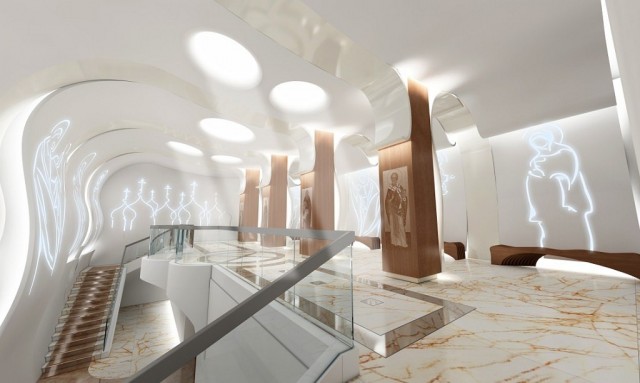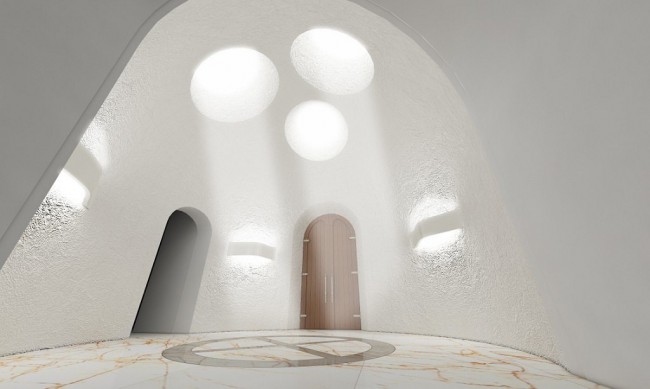Anna Martovitskaya. Canon vs contemporaneity: mission possible | archi.ru, 26.07.2012
The school of theology (or “seminary”, as it is called in Russia) will be built in the very center of Moscow, in the immediate vicinity of Sretensky stauropegion (“reporting directly to the holy Sinod or Patriarch”) monastery. For this purpose, the administration of the educational institution was allotted a former school building on Bolshaya Lubyanka Street. Built in the post-Stalin era, it is based on the appropriate architectural and layout solution that the architects are planning to keep generally intact, at least as far as the overall dimensions and the bearing structure is concerned.
Sergey Estrin shares that the image of the interior came to him once he got down to making his first sketches of the project. To a large extent, it continues the tradition of the ascetic interiors of the Sretensky Monastery itself, only this austerity here is “retold” in the language of contemporary techniques and materials. An important part here was played by the initial layout of the building: along the central axis of the main large rectangular lobby, for example, there are very massive rectangular columns. To offset these rigid verticals, the architect created the “hovering” – uplifting – plastic shape of the walls and the ceiling.
By using the plates of white Corian that run in waves over the smooth surfaces, Sergey Estrin does not only softens the original geometry of the premises but also creates a contemporary interpretation of such characteristic features of Russian temple architecture as vaults and arches. The broad stripe s of this plastic material exchange with wide as the columns stripes. The former, Corian stripes are interpreted as canvas that can carry any “thematically appropriate” image, while the latter segregate the room into smaller segments, visually turning the monotonous corridor into gala enfilade. This impression is enhanced by the lights installed behind the plates – the dispersed light, seemingly streaming from out of nowhere, not only adds to the solemnity of the lobby but also to its resemblance to the monastery interiors.
There are also other “adoptions” from the temple architecture tradition: the tall oval-shaped wooden doors, the apsis-shaped balcony, the backlit round recessions in the ceiling that serve to simulate the dome drums, and the map of a canonic temple, inlaid on the marble floor. When it came to such an indispensable part of the interior decoration of any temple as wall painting, the architect offered two possible scenarios at once: for the authentic artifacts (or screens that will display them) spaces on the columns are reserved, while on the Corian “canvases” Estrin puts the conditional, almost sketchy images of Orthodox saints and temples, only he does it not with the help of narrow slits backlit from the inside.
Text by: Anna Martovitskaya for archi.ru
Design Team: Sergey Estrin, Denis Dubinin, Ekaterina Agafonova



